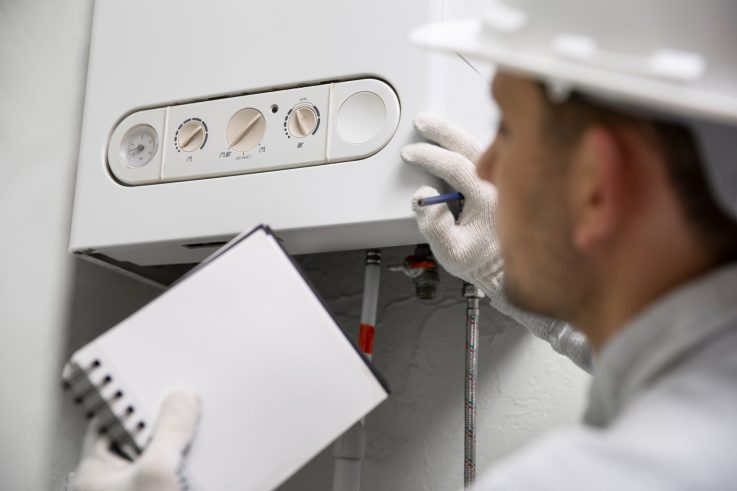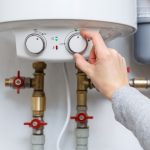
Water Heater Replacement: Signs It’s Time for an Upgrade
Few household systems influence daily comfort as much as hot water. Showers, laundry, dishes, even basic hygiene all rely on a reliable heater humming quietly in the background. When that reliability slips—longer waits, lukewarm water, odd noises—the smart move is to start planning rather than reacting. That’s where water heater replacement enters the conversation. This guide, written on behalf of Super Green HVAC, explains how to spot the early warning signs, compare technologies, understand total costs, and design a project that delivers safe, efficient hot water for years.
You’ll learn the difference between repair-now/replace-later decisions, how sizing actually works, what a professional install includes, and how maintenance protects your investment. We’ll also highlight trusted Canadian resources and close with practical FAQs so you can approach water heater replacement with clarity and confidence.
The Tell-Tale Symptoms You Shouldn’t Ignore
Everyday clues that point to trouble
Hot-water systems rarely fail out of the blue. They send signals for months—sometimes a year—before the big breakdown. Pay attention to these patterns and you can schedule water heater replacement on your terms:
- Longer wait times at fixtures: If the shower takes noticeably longer to warm or temperature fluctuates mid-stream, your burner, elements, or dip tube may be underperforming.
- Discolored or rusty water: Internal tank corrosion is advancing, and sediment may be scouring the liner.
- Popping or rumbling sounds: Boiling through sediment layers stresses the tank and wastes energy.
- Water around the base: Even a slow seep means the tank is nearing end-of-life; leaks rarely self-heal.
- Frequent resets or tripped breakers: Elements or controls are failing intermittently—a prelude to full failure.
When two or more symptoms stack up, a targeted repair may only buy months. Proactively planning water heater replacement avoids emergency fees and mid-morning cold showers.
Age and reliability: the math that matters
Traditional tank-style heaters often last 8–12 years (water quality and maintenance count). If your unit is within that range and showing symptoms, repair money can become sunk cost. Once you pass the decade mark, a planned water heater replacement typically delivers better comfort, efficiency, and safety than chasing part failures one at a time.
Energy Costs and the Hidden Price of Waiting
Why inefficiency accelerates with age
Sediment builds up, reducing heat transfer; anode rods exhaust, inviting corrosion; thermostats drift. Each factor adds minutes to heat-up times and dollars to bills. Over one or two winters, those small penalties can cost as much as a meaningful share of water heater replacement.
The three-year lens
To compare fairly, total the likely repairs + elevated energy spend over the next 36 months. Then compare that with the net cost of a right-sized water heater replacement, including lower operating costs and warranty coverage. Many homeowners are surprised to see replacement win—especially when comfort and safety are included in the calculus.
Safety First: Combustion, Venting, and Water Damage
Leak risk isn’t hypothetical
Even a slow drip can damage adjacent drywall and flooring, and hidden leaks may foster mold. If you see moisture near the base or corrosion around fittings, scheduling water heater replacement is about protecting your home as much as restoring performance.
Combustion and venting
Gas models demand proper combustion air and venting. Back-drafting, scorch marks, or persistent exhaust odors are red flags. A professional assessment determines if the safest path is an immediate repair or full water heater replacement with code-compliant venting and shut-offs.
Which Type Fits Your Home (and Why)
Different families, floorplans, and fuel mixes call for different solutions. Choosing well now prevents regrets later.
Conventional tank (storage) heaters
- Pros: Familiar, lower upfront cost, straightforward swap.
- Cons: Standby losses and finite supply; less efficient at high demand.
- Best for: Budget-sensitive replacements or where gas line/panel upgrades aren’t feasible.
Tankless (on-demand) systems
- Pros: Endless hot water within capacity, small footprint, lower standby losses.
- Cons: Requires correct sizing; gas units need adequate line/venting; electric may need panel upgrades.
- Best for: Households that value continuous supply or floor-space savings; excellent option for strategic water heater replacement paired with recirculation.
Heat pump water heaters (hybrid)
- Pros: High efficiency using ambient air; can cool/dehumidify the space they’re in.
- Cons: Needs sufficient room volume and air temperature; can be taller than standard tanks.
- Best for: Utility rooms with enough space and moderate ambient temps, where maximum efficiency is the priority during water heater replacement.
Sizing 101: Capacity, Recovery, and Flow
Start with your pattern of use
Do you run back-to-back showers? Fill a soaking tub? Wash in hot? The right water heater replacement matches real-life peaks—not a brochure average.
- Tank capacity: 40–75 gallons are typical. Larger isn’t always better—recovery rate matters, too.
- Recovery rate (tanks): How quickly the heater reheats water; gas models often recover faster.
- Flow and temperature rise (tankless): Add simultaneous fixture flows and the winter incoming-water temperature rise to determine required output.
Practical example
Two showers running simultaneously and a dishwasher cycling can require ~15–19 L/min at a 40–50°C rise for consistent comfort. That may point to a higher-capacity tankless or a well-sized high-recovery tank for your water heater replacement.
The Installation Process, Step by Step
A reliable result is designed, not guessed. Here’s what to expect from a professional job.
1) Assessment and options
Technicians evaluate fuel/electric capacity, vent paths, drain pans, expansion tanks, seismic strapping, and local code requirements. You’ll receive clear choices: keep/repair or proceed with water heater replacement, including good-better-best options.
2) Prep and protection
Floors are protected; the old unit is safely drained and disconnected. For gas units, gas line sizing and shut-offs are verified; for electric, dedicated circuits and breaker capacity are confirmed before water heater replacement begins.
3) Install and connections
The new unit is set, leveled, and connected. Venting is routed per manufacturer specs; condensate lines (for condensing/heat pump units) are trapped and drained correctly. A drain pan and leak sensor are often added during water heater replacement for extra peace of mind.
4) Commissioning and safety checks
Gas pressure, combustion, and vent draft are measured; thermostats and mixing valves are calibrated; recirculation controls (if installed) are tested. Commissioning verifies your water heater replacement performs as promised—quietly and safely.
5) Walkthrough and documentation
You’ll learn filter/descale intervals (tankless), anode and sediment flushing schedules (tanks), and how to adjust setpoints responsibly. Keep the install record; it anchors future maintenance.
Recirculation: Making Hot Water Feel “Instant”
Even the best heater can’t beat physics—the water in your pipes cools as it sits. If distant fixtures lag, a smart recirculation strategy paired with water heater replacement can make the experience feel immediate.
- Dedicated return loop: Fastest delivery with minimal temperature swing.
- Crossover (without return line): Uses the cold line as a return path; easy retrofit for many homes.
- On-demand controls: Buttons, occupancy sensors, or app integrations run the pump only when needed.
Balanced, well-controlled recirculation saves both time and water without undermining the efficiency gains of your water heater replacement.
Maintenance After Replacement: Protecting Your Investment
A little care goes a long way toward reliability.
- Annual or bi-annual flushing (tanks): Reduces sediment, restores efficiency, and quiets operation.
- Anode rod checks: Extends tank life; a low-cost way to delay the next water heater replacement.
- Descale cycles (tankless): Preserves heat transfer and stable outlet temperature.
- Filter cleaning and vent checks: Keeps airways clear and controls accurate.
- Leak sensors and pans: Early alerts prevent damage even years after water heater replacement.
Budget, Financing, and Total Cost of Ownership
Sticker vs. lifetime
A lower upfront price can hide higher monthly costs. Compare the total cost over 10–15 years: energy use, maintenance, and likelihood of mid-life repairs. Many homeowners find a slightly higher upfront water heater replacement (with better efficiency and warranty) costs less overall.
Incentives and education
For neutral information and potential programs, see:
- Natural Resources Canada – Energy Efficiency for Homes
- Government of Canada – Water conservation overview
Use these resources to explore efficiency standards and complementary upgrades that pair well with water heater replacement.
11 Practical Tips for a Smooth Replacement Day
- Clear a path to the utility area for safe removal and install.
- Note your peak-use windows so scheduling avoids cold-water surprises.
- Photograph the old unit’s labels—handy for future reference.
- Ask for a pan and leak sensor if none is present.
- Confirm gas shut-off and water shut-off locations with the tech.
- Plan outlet GFCI or breaker changes (if needed) ahead of time.
- Discuss setpoint and mixing valve targets for comfort and safety.
- If installing tankless, consider a descaling port kit for easy service.
- Add pipe insulation near the heater to reduce line losses.
- Verify venting materials match the manufacturer’s listing.
- Schedule your first maintenance reminder the day water heater replacement is complete.
Mistakes to Avoid When Choosing a New System
- Guessing size from the old label: Your home and usage may have changed—right-size your water heater replacement.
- Ignoring water quality: Hard water shortens life and reduces output; plan filtration or treatment.
- Skipping commissioning: Numbers matter. A great water heater replacement includes verified temperatures, flows, and safety checks.
- Choosing the lowest bid without scope detail: Confirm venting, gas/electrical work, drain pans, expansion tanks, and permits are included.
Why Choose Super Green HVAC
Tank, tankless, or heat pump—no two homes are identical. Super Green HVAC treats water heater replacement like the small engineering project it is, with design-first decisions and careful craftsmanship.
What sets us apart
- Load-first sizing: We analyze real fixtures and peak patterns before recommending equipment.
- Flawless connections: Correct gas sizing, vent routing, electrical capacity, and condensate handling aren’t optional—they’re standard.
- Commissioning you can trust: We verify temperature stability, safety controls, and—when applicable—recirculation timing so your water heater replacement works perfectly on day one.
- Education and follow-through: You’ll get clear maintenance intervals, simple owner checks, and friendly reminders to keep performance steady.
- Respect for your home: Shoe covers, floor protection, tidy work zones, and thorough clean-up, every time.
If you want a smoother project, better comfort, and long-term value, you want a team that treats details as the main event in water heater replacement.
Bringing It All Together
When hot water becomes unpredictable—or repairs start stacking up—the lowest-risk, lowest-stress path is planning ahead. By reading your system’s signals, understanding sizing and technology options, and choosing a contractor who measures what matters, you’ll get a water heater replacement that delivers safer, steadier, more efficient comfort every day.
Ready to upgrade? Schedule a design visit with Super Green HVAC. We’ll compare repair vs. water heater replacement, right-size your options, model operating costs, and deliver a clean, code-compliant install that works beautifully from the first turn of the tap.
Frequently Asked Questions (FAQs)
1) How do I know if I should repair or schedule water heater replacement?
If your unit is 8–12 years old and showing multiple symptoms (long heat-up times, rust, leaks, or recurring resets), water heater replacement typically offers better long-term value than piecemeal repairs.
2) Will water heater replacement lower my energy bills?
Often yes. Newer tanks have improved insulation and controls, while tankless and heat pump models cut standby losses significantly. The right water heater replacement usually reduces monthly costs and improves comfort.
3) What size should I choose for water heater replacement?
Sizing depends on simultaneous demand and, for tankless, winter temperature rise. A professional assessment ensures your water heater replacement matches real-world peaks without costly oversizing.
4) Do I need a recirculation system with water heater replacement?
Not always. If distant fixtures take too long to heat, a dedicated return loop or crossover valve with smart controls can make your water heater replacement feel “instant” at the tap.
5) How long does professional water heater replacement take?
Most straightforward tank swaps finish the same day. Tankless or heat pump units, or installs requiring gas/electric upgrades, may take longer. Your water heater replacement timeline is clarified during assessment.
6) Are permits and inspections required for water heater replacement?
In many jurisdictions, yes—especially for gas venting and electrical work. A licensed contractor will handle permits and ensure your water heater replacement meets local codes and manufacturer requirements.
7) What maintenance extends the life of my water heater replacement?
Flush sediment (tanks), check anode rods, descale tankless exchangers as needed, and keep filters/vents clear. These basics keep your water heater replacement efficient and reliable for years.
Want a one-page planning checklist for your upcoming water heater replacement—including sizing notes, water quality tips, and recirculation options? Ask us, and we’ll send a printable version you can keep with your home records.


